| ID | N | Xmean | Ymean | σX | σY | R |
|---|---|---|---|---|---|---|
| 1 | 142 | 54.26610 | 47.83472 | 16.76982 | 26.93974 | -0.06412835 |
| 2 | 142 | 54.26873 | 47.83082 | 16.76924 | 26.93573 | -0.06858639 |
| 3 | 142 | 54.26732 | 47.83772 | 16.76001 | 26.93004 | -0.06834336 |
| 4 | 142 | 54.26327 | 47.83225 | 16.76514 | 26.93540 | -0.06447185 |
| 5 | 142 | 54.26030 | 47.83983 | 16.76774 | 26.93019 | -0.06034144 |
| 6 | 142 | 54.26144 | 47.83025 | 16.76590 | 26.93988 | -0.06171484 |
| 7 | 142 | 54.26881 | 47.83545 | 16.76670 | 26.94000 | -0.06850422 |
| 8 | 142 | 54.26785 | 47.83590 | 16.76676 | 26.93610 | -0.06897974 |
| 9 | 142 | 54.26588 | 47.83150 | 16.76885 | 26.93861 | -0.06860921 |
| 10 | 142 | 54.26734 | 47.83955 | 16.76896 | 26.93027 | -0.06296110 |
| 11 | 142 | 54.26993 | 47.83699 | 16.76996 | 26.93768 | -0.06944557 |
| 12 | 142 | 54.26692 | 47.83160 | 16.77000 | 26.93790 | -0.06657523 |
| 13 | 142 | 54.26015 | 47.83972 | 16.76996 | 26.93000 | -0.06558334 |
The grammar of graphics
Lecture 2
Dr. Benjamin Soltoff
Cornell University
INFO 5001 - Fall 2025
August 28, 2025
Announcements
Announcements
- Enroll if you are not already enrolled
- Homework 0 tomorrow
Learning objectives
- Identify the importance of graphics in communicating information
- Define the layered grammar of graphics
- Practice generating statistical graphs using the grammar of graphics and {ggplot2}
- Familiarize yourself with the Positron IDE
Warm up
Examining data visualization
Discuss the following for the visualization.
What is the visualization trying to show?
What is effective, i.e. what is done well?
What is ineffective, i.e. what could be improved?
What are you curious about after looking at the visualization?
03:00
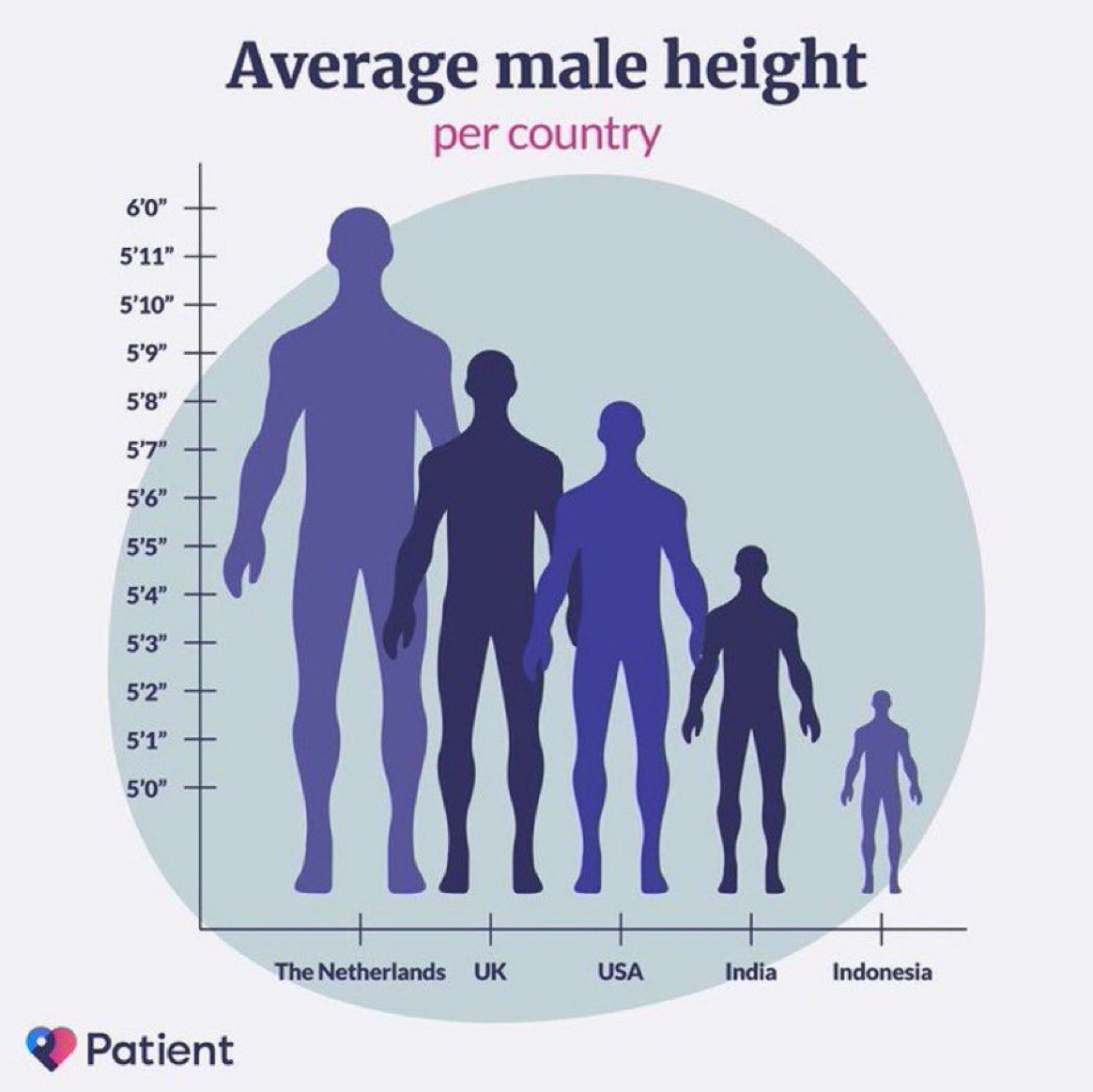
Image credit: Twitter
Why visualize data?
Just show me the data!
Oh no
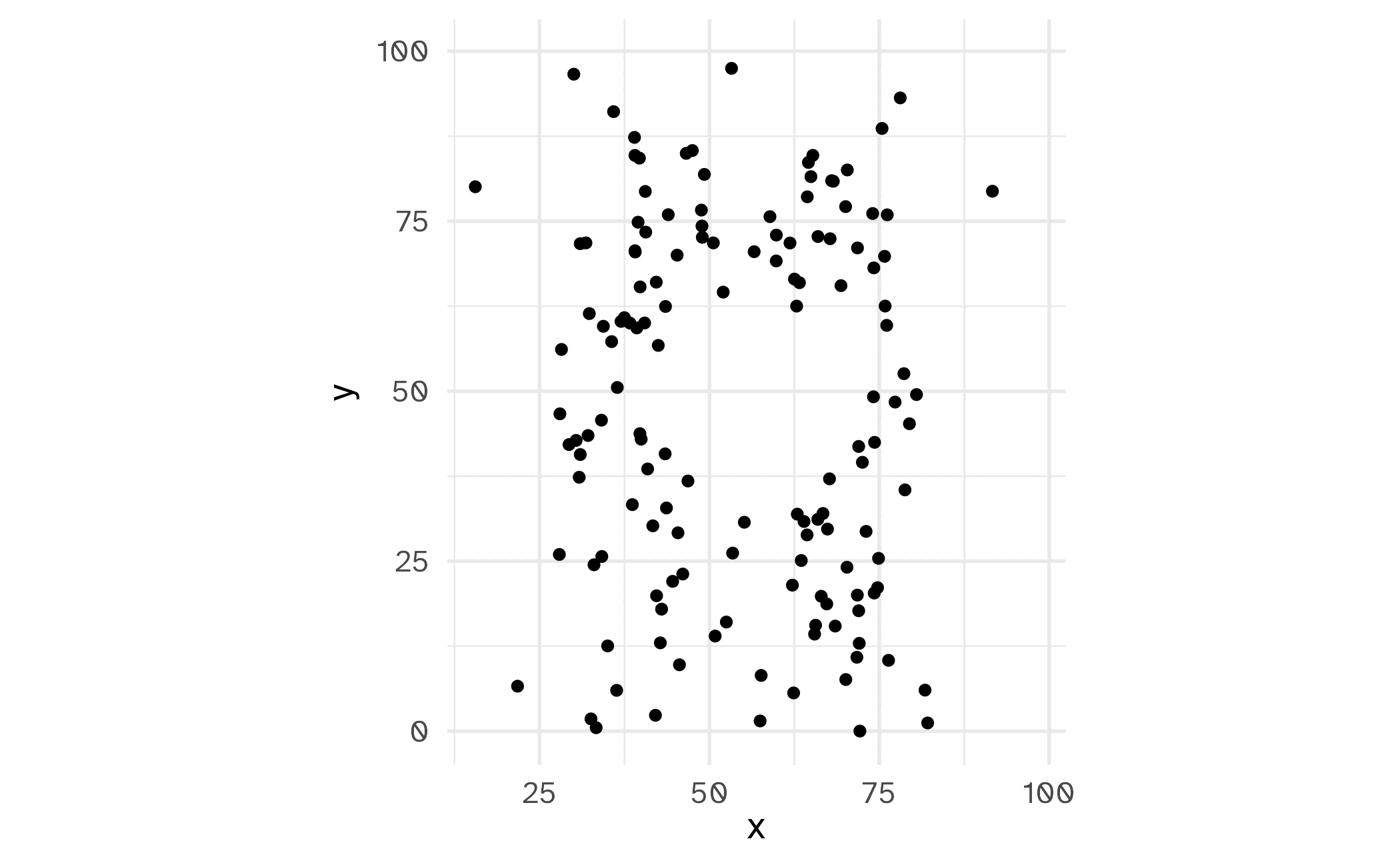
Raw data is not enough
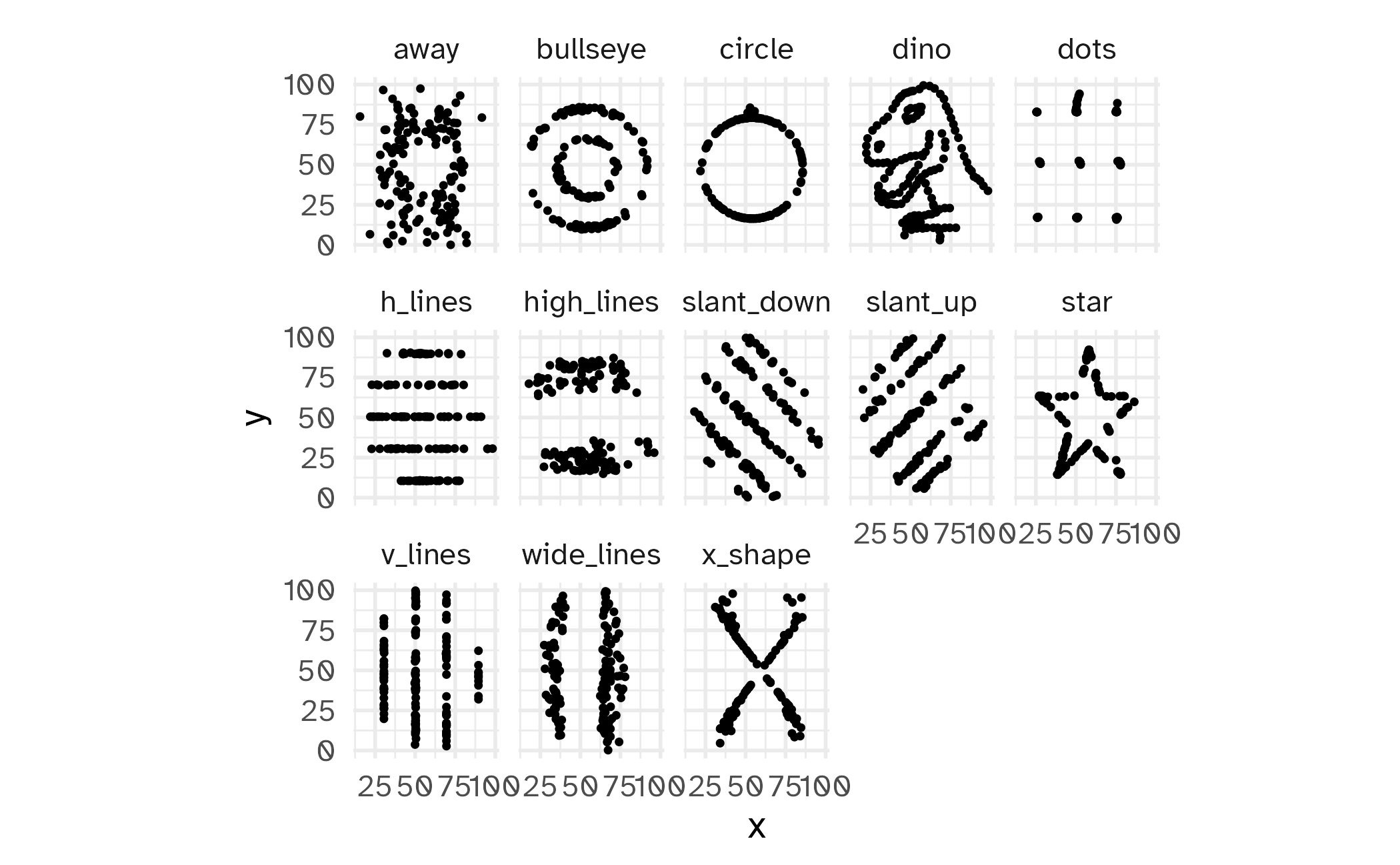
The grammar of graphics
Grammar
The whole system and structure of a language or of languages in general, usually taken as consisting of syntax and morphology (including inflections) and sometimes also phonology and semantics.
Grammar of graphics
- “The fundamental principles or rules of an art or science”
- A grammar used to describe and create a wide range of statistical graphics
- Layered grammar of graphics
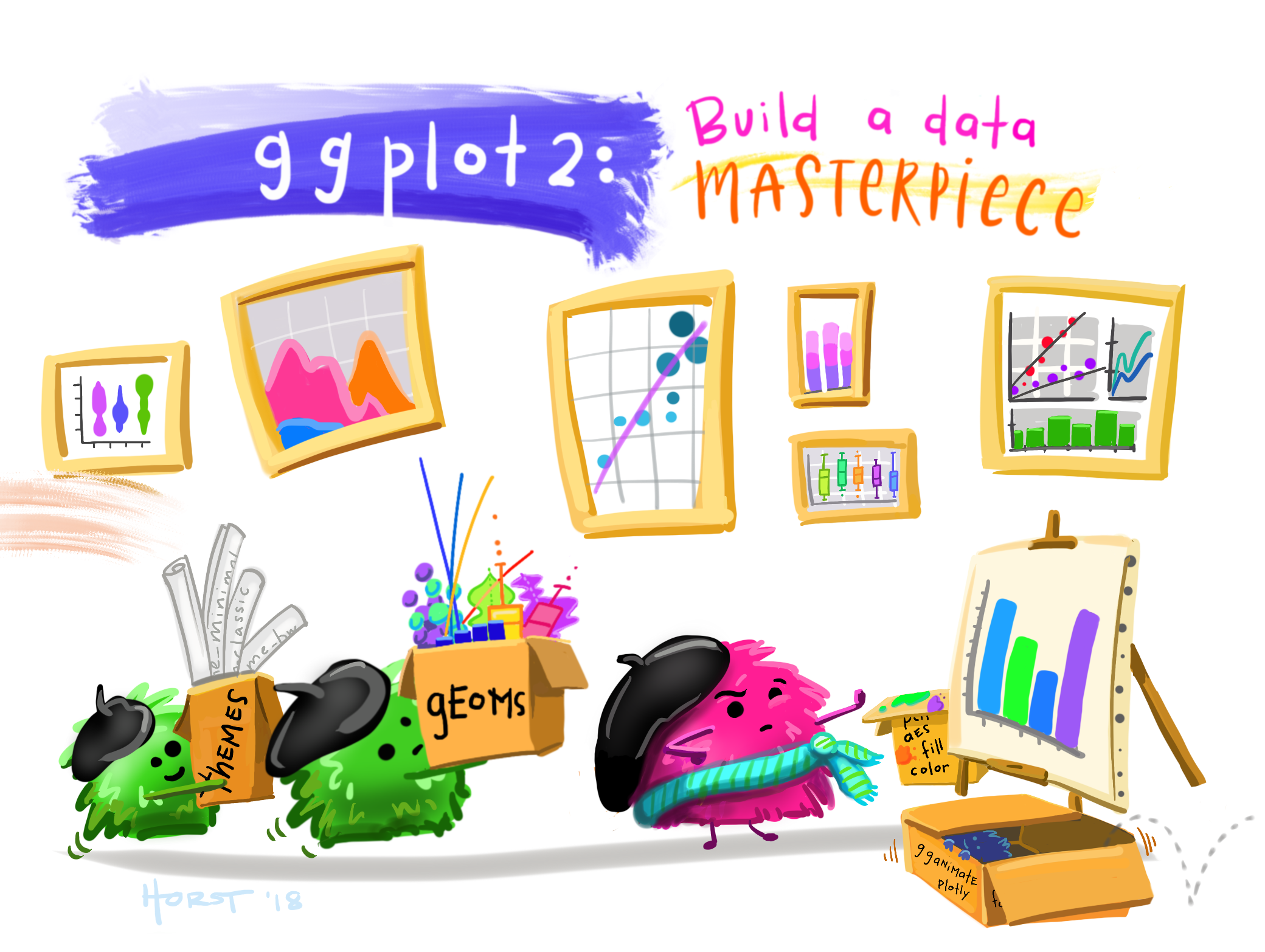
Image credit: @allison_horst
Application exercise
World development indicators
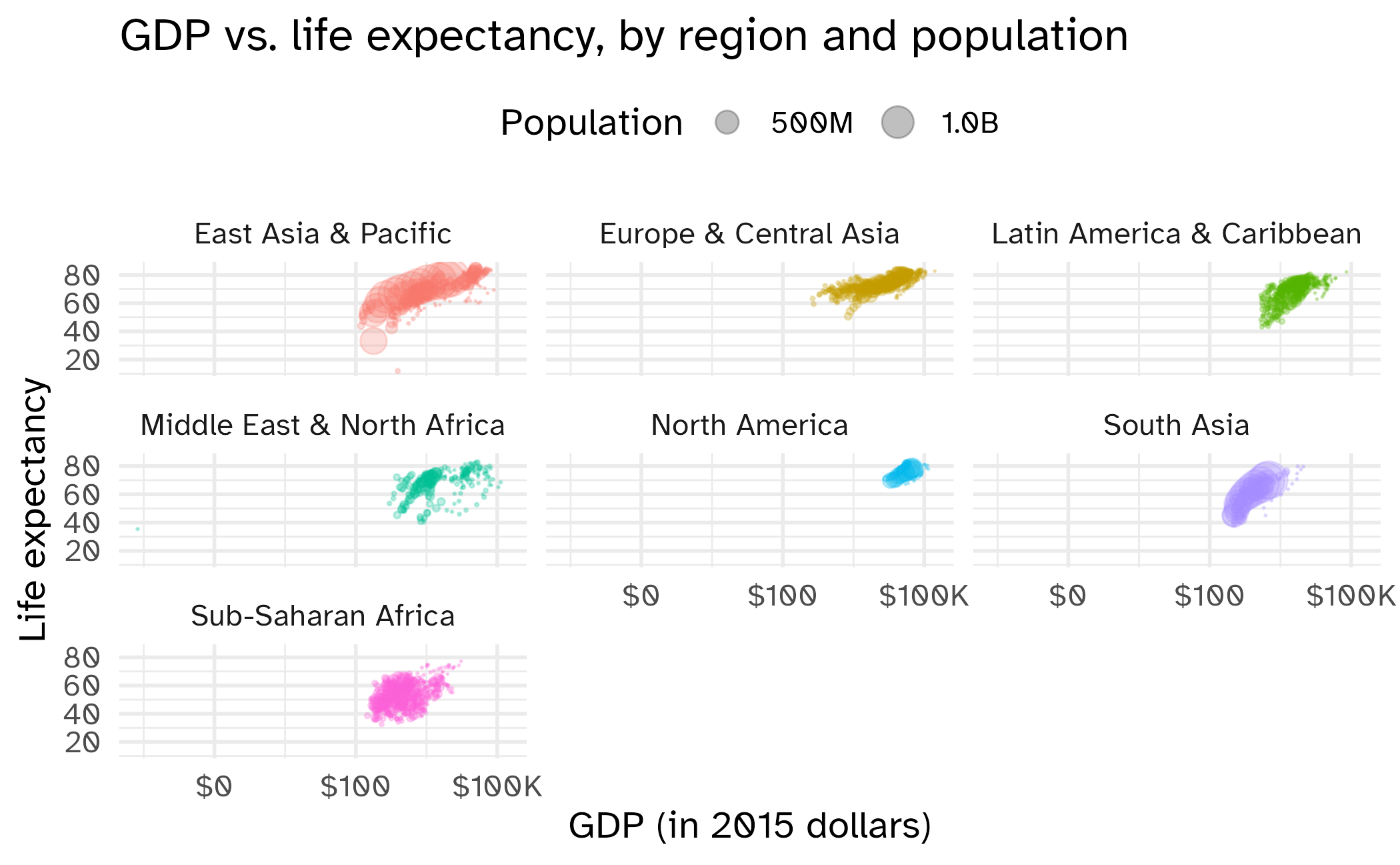
ae-00
Instructions
- Go to
github.com/info-5001/ae-00-wdi. - Clone the repo in Positron, run
renv::restore()to install the required packages, open the Quarto document in the repo, and follow along and complete the exercises.
Warning
ae-00-wdi is hosted on GitHub.com because we have not configured your authentication method for Cornell’s GitHub. We will do this tomorrow in lab.
Wrap up
Recap
- Construct plots with
ggplot(). - Components of ggplots are separated by
+s. - The formula is (almost) always as follows:
- Aesthetic attributes of a geometries (color, size, transparency, etc.) can be mapped to variables in the data or set by the user, e.g.
color = regionvs.color = "pink". - Use
facet_wrap()when faceting (creating small multiples) by one variable andfacet_grid()when faceting by two variables.